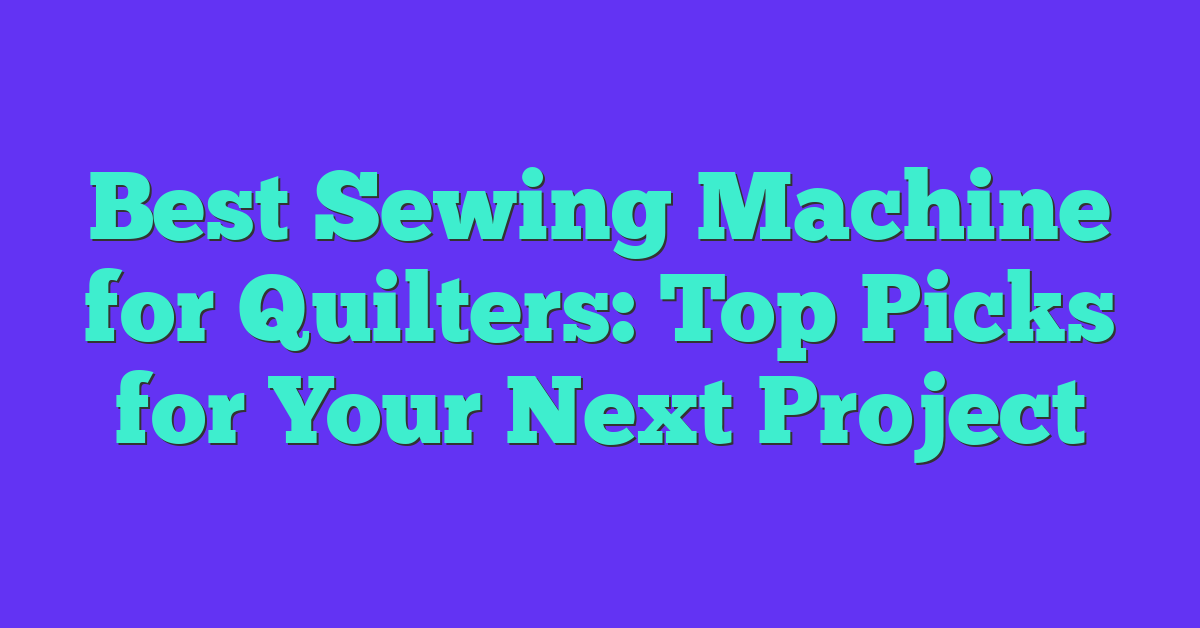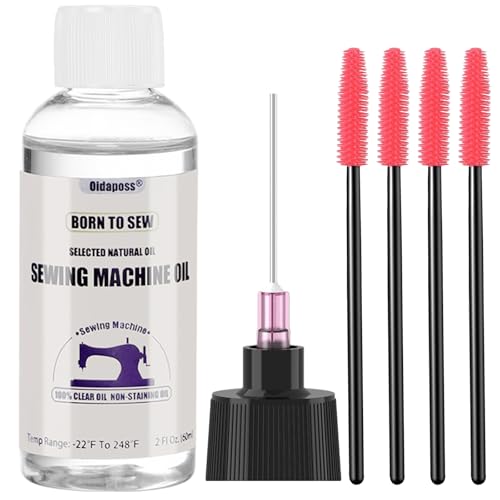As a quilter, I know how important it is to have a good sewing machine. A quilting sewing machine can make all the difference in creating beautiful, precise quilts. With so many options on the market, it can be overwhelming to choose the best one for your needs. That’s why I’ve put together this guide to help you find the best sewing machine for quilters.
Understanding quilting and sewing is important when choosing a sewing machine. Quilting involves sewing multiple layers of fabric together to create a thick, durable blanket. This requires a sewing machine with a strong motor and the ability to handle thick fabrics. Sewing machines designed for quilting have features that make the process easier and more efficient. They also have a larger work area to accommodate the size of quilts.
When looking for a quilting sewing machine, there are several features to look for. These include a large work area, adjustable speed control, automatic needle threader, and a variety of stitch options. It’s also important to consider the brand and customer support. In this guide, I’ll go over the best sewing machines for quilters and the features that make them stand out.
Key Takeaways
- Understanding quilting and sewing is important when choosing a sewing machine
- Look for features such as a large work area, adjustable speed control, and automatic needle threader
- Consider the brand and customer support when making your decision
Understanding Quilting and Sewing
As a quilter, I know that quilting is an art form that involves stitching together multiple layers of fabric to create a cozy and beautiful quilt. Sewing, on the other hand, is the process of joining two pieces of fabric together using a needle and thread. While both quilting and sewing involve stitching fabrics together, they are different processes with unique techniques and tools.
Quilting projects can range from simple wall hangings to complex family heirlooms. Quilting techniques can include traditional piecing, applique, and free-motion quilting. Traditional piecing involves sewing together small fabric pieces to create a larger design. Applique is the process of attaching small fabric pieces onto a larger fabric piece to create a design. Free-motion quilting involves using a sewing machine to create intricate designs on the quilt top.
When it comes to sewing machines for quilting, there are many options available. Some machines are designed specifically for quilting, while others are more versatile and can be used for a variety of sewing projects. It’s important to consider your needs and budget when choosing a sewing machine for quilting.
In my experience, a good quilting machine should have a large throat space, which is the area between the needle and the machine’s body. This allows for more room to maneuver the quilt while quilting. A machine with a variety of stitch options can also be helpful for creating unique designs on the quilt top. Additionally, a machine with a walking foot can help feed the layers of fabric evenly through the machine, preventing puckering and bunching.
Overall, understanding the differences between quilting and sewing, as well as the various quilting techniques and projects, can help you choose the best sewing machine for your needs. Whether you’re a beginner or an experienced quilter, there’s a sewing machine out there that can help you create beautiful and lasting quilts.
Types of Sewing Machines for Quilting
When it comes to quilting, having the right sewing machine can make all the difference. There are different types of sewing machines for quilting, each with its own unique features and benefits. In this section, I will discuss the three main types of sewing machines for quilting: mechanical, computerized, and dedicated quilting machines.
Mechanical Sewing Machines
Mechanical sewing machines are the most basic type of sewing machine. They are operated by a foot pedal and require manual adjustments for stitch length, width, and tension. These machines are ideal for beginners or those who prefer a more hands-on approach to sewing. Mechanical machines are generally more affordable than computerized or dedicated quilting machines, making them a great option for those on a budget.
Computerized Sewing Machines
Computerized sewing machines are more advanced than mechanical machines. They have built-in computers that allow for automatic stitch selection, stitch length, and tension adjustments. These machines also often come with a variety of pre-programmed stitches and can be programmed to create custom stitches. Computerized machines are a great option for quilters who want more precision and control over their stitching.
Dedicated Quilting Machines
Dedicated quilting machines are specialized machines designed specifically for quilting. They are often larger than other types of sewing machines and have a longer arm to accommodate larger quilts. These machines typically have a higher stitch-per-minute speed and can handle thicker fabrics and multiple layers. Dedicated quilting machines also often come with features like automatic thread cutting and needle positioning. While they can be more expensive than other types of sewing machines, they are a great investment for serious quilters.
In conclusion, the type of sewing machine you choose for quilting will depend on your skill level, budget, and specific needs. Mechanical machines are great for beginners, computerized machines offer more precision and control, and dedicated quilting machines are a great investment for serious quilters.
Features to Look for in a Quilting Sewing Machine
As a quilter, I know that having the right sewing machine can make all the difference in the quality and speed of my work. When looking for a quilting sewing machine, there are several features to consider. Here are the most important ones to keep in mind:
Automatic Features
Automatic features can save time and make the quilting process more efficient. Look for a machine with an automatic needle threader, which can save your eyes from strain and make threading the needle easier. An automatic thread cutter is also a great feature, allowing you to quickly and easily cut threads without having to reach for scissors.
Needle and Thread Features
A good quilting machine should have adjustable needle and thread features. Look for a machine with adjustable thread tension, which can help prevent thread breakage and ensure even stitches. A built-in needle threader can also be a time-saver, especially if you have trouble threading needles by hand.
Extension Table and Throat Space
Quilting requires a lot of space, so look for a machine with a large extension table and throat space. A large extension table can provide extra support for large quilts, while a larger throat space can make it easier to maneuver the fabric while quilting.
Stitching Features
The stitching features of a quilting machine can greatly impact the final product. Look for a machine with a variety of built-in stitches, including decorative stitches, which can add interest and texture to your quilts. A quilting foot and presser feet can also be helpful, as they provide better control and accuracy when sewing.
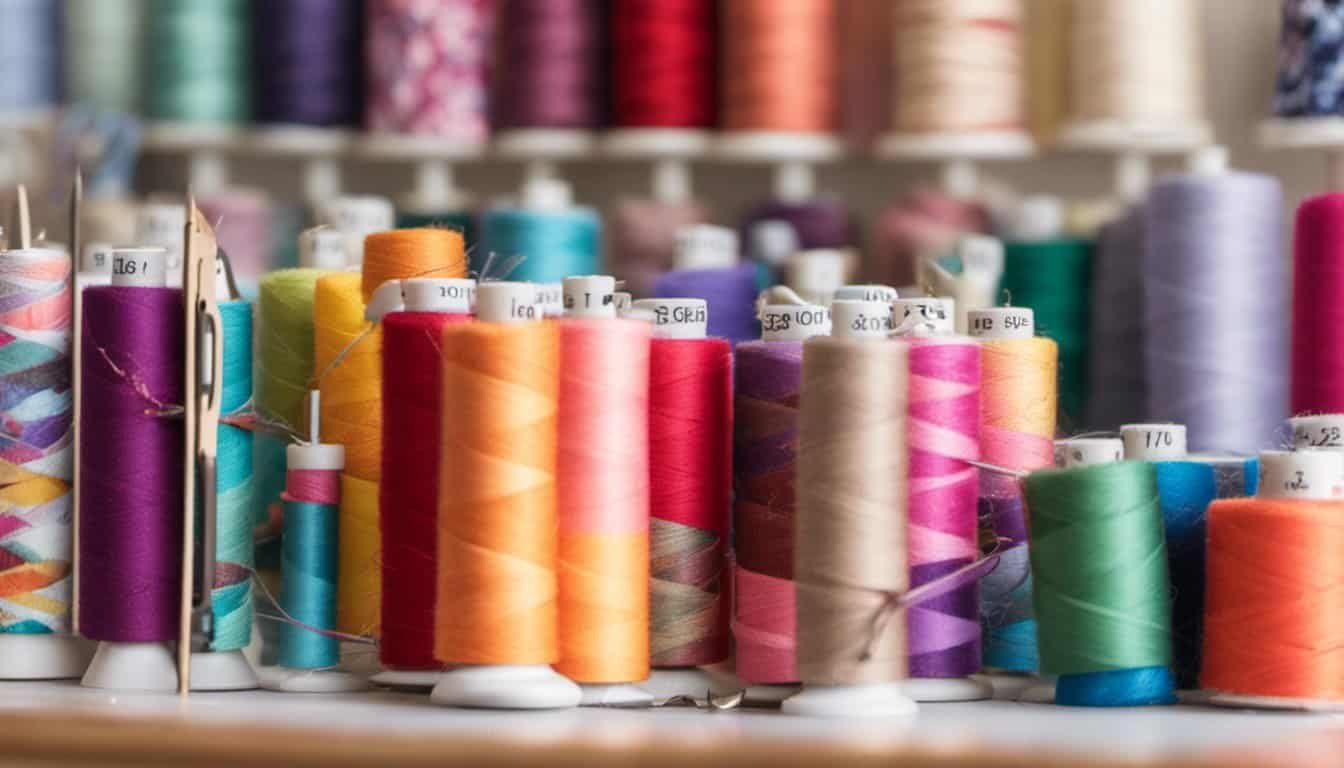
When shopping for a quilting sewing machine, keep in mind the features that are most important to you. Whether you’re looking for an automatic thread trimmer, buttonhole stitches, or a large throat space, there’s a machine out there that can meet your needs.
Best Sewing Machines for Quilting
As a quilter, I know how important it is to have the right sewing machine. A good sewing machine can make all the difference in the quality of your quilts. After doing some research and trying out different machines, I have compiled a list of the best sewing machines for quilting.
Best Overall
The Singer Quantum Stylist 9960 Sewing Machine is my top pick for the best sewing machine for quilting. It has 600 built-in stitches, including 13 automatic buttonholes and 5 alphanumeric fonts. The machine also has a large extension table, making it easy to work on larger quilts. It is user-friendly and has an automatic needle threader, making it easy to get started on your quilting projects.
Best for Beginners
If you are new to quilting, the Brother CS7000i Sewing and Quilting Machine is a great option. It is affordable and easy to use. The machine has 70 built-in stitches, including 10 one-step buttonholes. It also has an automatic needle threader and a drop-in bobbin system, making it easy to get started on your quilting projects.
Best Budget Option
« Best Serger for Beginners: Top Picks for Easy Sewing
Brother XM2701 Review: A Friendly Guide to the Best Sewing Machine for Beginners »
For those on a budget, the Singer Heavy Duty 4423 Sewing Machine is a great option. It is affordable and durable, making it a great investment for those just starting out with quilting. The machine has 23 built-in stitches, including a one-step buttonhole. It also has a heavy-duty metal frame, making it sturdy and long-lasting.
Best for Professionals
If you are a professional quilter, the Juki TL-2010Q Sewing Machine is a great option. It is a high-end machine, but it is worth the investment for its quality and durability. The machine has a large work area and a maximum sewing speed of 1,500 stitches per minute. It also has a thread trimming system and an automatic needle threader, making it easy to work on even the most complex quilting projects.
These are my top picks for the best sewing machines for quilting. Whether you are a beginner or a professional, there is a sewing machine on this list that will meet your needs and help you create beautiful quilts.
Popular Quilting Sewing Machine Models
When it comes to finding the perfect sewing machine for quilting, there are plenty of options to choose from. In this section, I will highlight some of the most popular quilting sewing machine models available in the market.
Brother Models
Brother is a well-known brand in the sewing industry, and they offer several models that are great for quilting. The Brother PQ1500SL is a popular choice for quilters who want a machine that can handle heavy-duty projects. It has a high-speed straight stitching capability that can sew up to 1,500 stitches per minute. The Brother XR3774 is another great option for those who are looking for a budget-friendly machine that can handle both quilting and regular sewing projects.
Juki Models
Juki is another brand that is well-known for its quality sewing machines. The Juki TL-2000Qi is a popular choice for quilters who want a machine that can handle both quilting and sewing projects. It has a large work area, making it easy to work on larger projects. The Juki TL-2010Q is another popular choice for quilters who want a machine that can handle free-motion quilting.
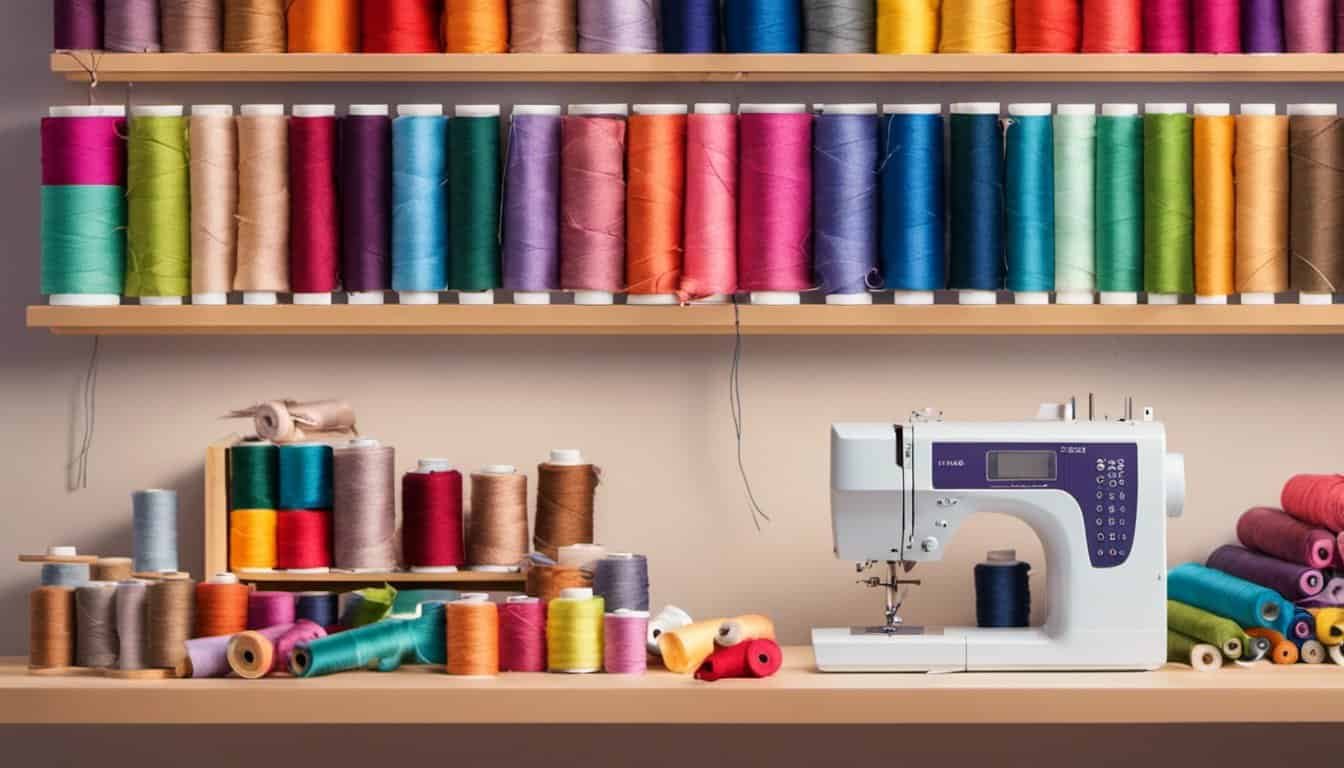
Janome Models
Janome is a brand that is known for its quality sewing machines, and they offer several models that are great for quilting. The Janome Memory Craft 6650 is a popular choice for quilters who want a machine that can handle both quilting and regular sewing projects. It has a large work area and comes with several quilting accessories. The Janome MC6650 is another great option for those who are looking for a machine that is easy to use and can handle heavy-duty projects.
Singer Models
Singer is a brand that has been around for over 150 years, and they offer several models that are great for quilting. The Singer Quantum Stylist 9960 is a popular choice for quilters who want a machine that can handle both quilting and regular sewing projects. It has a large work area and comes with several quilting accessories. The Singer 9960 is also a great option for those who are looking for a machine that is easy to use and can handle heavy-duty projects.
In conclusion, there are plenty of great sewing machine models available for quilters. Whether you are looking for a budget-friendly option or a high-end machine that can handle heavy-duty projects, there is a machine out there that will meet your needs.
Caring for Your Quilting Sewing Machine
As a quilter, I understand the importance of taking good care of my sewing machine. Proper maintenance not only ensures that it lasts for years but also helps it perform at its best. Here are some tips on how to care for your quilting sewing machine:
Keep It Clean
Dust, lint, and thread can accumulate inside your sewing machine, affecting its performance. That’s why it’s important to clean it regularly. I recommend using a soft brush to remove lint and dust from the bobbin area, feed dogs, and thread paths. You can also use compressed air to blow out any debris. Don’t forget to wipe down the exterior of the machine with a damp cloth to remove any dirt or grime.
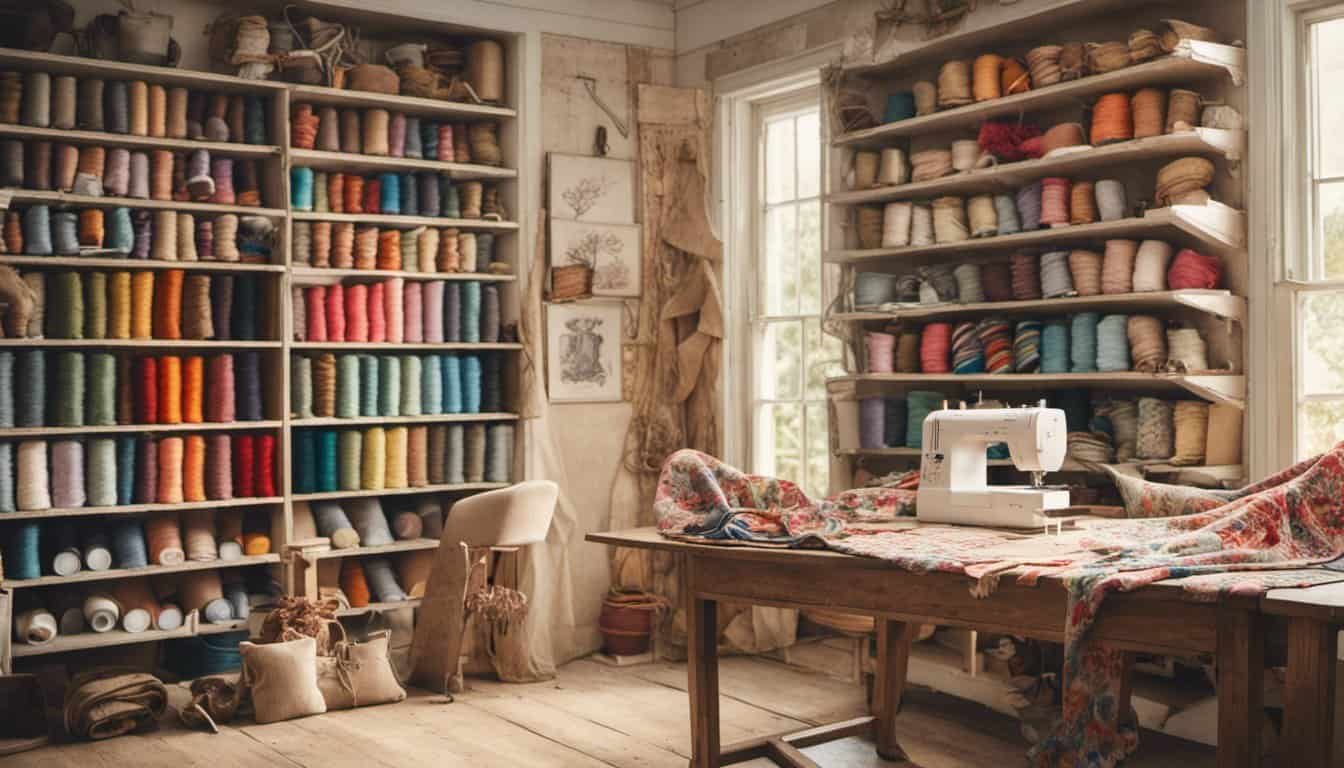
Oil It
Your sewing machine needs oil to keep its moving parts lubricated. I recommend following the manufacturer’s instructions on when and how to oil your machine. Some machines require oiling after every use, while others need it only once a month. Be sure to use the right type of oil for your machine, and don’t over-oil it.
Check the Tension Settings
Tension settings play a crucial role in the quality of your stitches. If the tension is too loose or too tight, your stitches may be uneven or puckered. I recommend checking your machine’s tension settings regularly and adjusting them as needed. If you’re not sure how to do this, consult your machine’s manual or a professional.
Store It Properly
When not in use, it’s important to store your sewing machine properly. I recommend covering it with a dust cover or a plastic bag to protect it from dust and moisture. If you’re going to store it for an extended period, remove the needle and the bobbin and clean the machine thoroughly before putting it away.
Look for Durability and Precision
When shopping for a quilting sewing machine, look for one that is durable and precise. A machine with a sturdy construction and high-quality components will last longer and perform better. Additionally, a machine with precise stitching capabilities will help you create professional-looking quilts.
Check for a 25-Year Limited Warranty
A 25-year limited warranty is a good sign that your quilting sewing machine is built to last. It gives you peace of mind knowing that you can rely on your machine for years to come. Be sure to check the warranty before making a purchase.
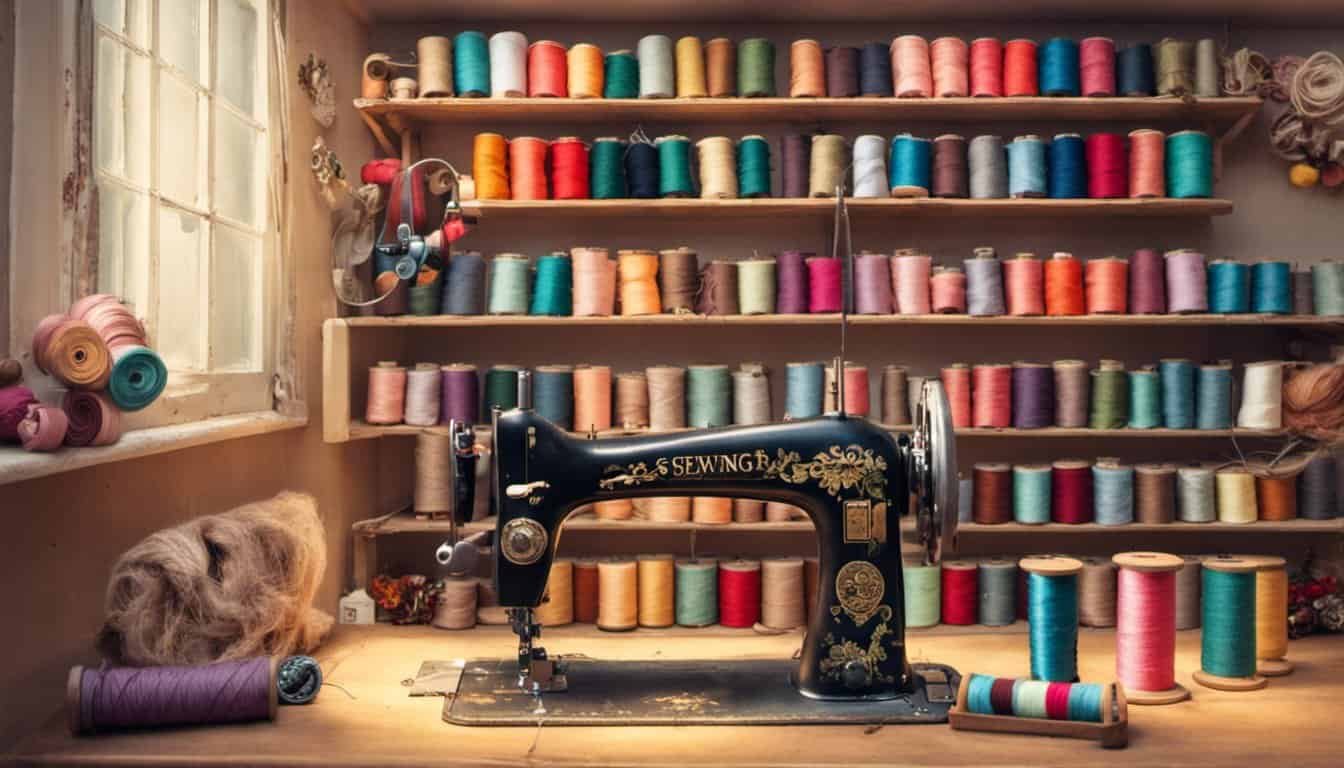
Choose Professional Quality
Professional-quality quilting sewing machines are designed to handle heavy use and produce high-quality results. They often come with advanced features such as automatic thread cutters, large workspaces, and adjustable presser feet. If you’re serious about quilting, investing in a professional-quality machine is a smart choice.
In conclusion, taking good care of your quilting sewing machine is essential to its longevity and performance. By following these tips, you can keep your machine in top shape and enjoy quilting for years to come.
Conclusion
After researching and reviewing the best sewing machines for quilters, I have come to the conclusion that finding the perfect machine for your quilting needs can be a daunting task. However, with the right information and guidance, you can easily find a machine that meets your needs and budget.
If you are a beginner quilter, you may want to consider a machine that is easy to use and lightweight, making it easy to move around. Some machines come with an instructional DVD that can help you get started with quilting. Additionally, machines with an LCD display can be helpful to keep track of your stitching progress.
For those who frequently travel to quilting classes or events, a portable machine may be the best choice. Look for machines with adjustable speed and the ability to handle multiple layers of fabric, including thick fabrics and wadding.

If you are a professional quilter, you may want to invest in a machine that offers free-motion quilting and straight stitch options. Additionally, machines that can handle leather and other tough materials may be necessary.
When it comes to affordability, there are plenty of options available for those on a budget. Look for machines that offer essential features such as straight stitches and a variety of quilting materials, while still being affordable.
Overall, the best sewing machine for quilters is one that meets your specific needs and budget. Consider the features that are most important to you, and take the time to research and compare different machines. With the right machine, you can create beautiful quilts with ease and precision.
Frequently Asked Questions
What features should I look for in a quilting sewing machine?
When choosing a sewing machine for quilting, there are a few key features to look for. First, make sure it has a large throat space to accommodate larger quilts. A machine with a built-in walking foot or dual-feed system can also be helpful to prevent fabric shifting. Look for a machine with adjustable stitch length and width, as well as a variety of stitch options. Finally, consider the machine’s speed and ease of use.
What is the difference between a regular sewing machine and a quilting machine?
A regular sewing machine is designed for a variety of sewing projects, while a quilting machine is specifically designed for quilting. Quilting machines typically have a larger throat space to accommodate larger quilts, and may also have a built-in walking foot or dual-feed system to prevent fabric shifting. They may also have additional stitch options and features specifically designed for quilting.

Which brand of sewing machine is best for quilting?
There are many brands of sewing machines that are suitable for quilting, including Brother, Janome, Juki, and Singer. Each brand has its own strengths and weaknesses, so it is important to research and compare models within each brand to find the best fit for your needs.
Are computerized quilting machines worth the investment?
Computerized quilting machines can be a worthwhile investment for serious quilters, as they offer a variety of advanced features and options. However, they can also be expensive and may not be necessary for all quilters. Consider your specific needs and budget before investing in a computerized quilting machine.
What is the best long arm quilting machine for home use?
There are many long arm quilting machines on the market, but not all are suitable for home use. Some popular options for home use include the Grace Q’nique 21, Juki TL-2200QVP, and Handi Quilter Simply Sixteen. Each machine has its own strengths and weaknesses, so it is important to research and compare models before making a decision.
Can you recommend a high-quality quilting machine for a beginner?
For beginners, a good option is the Brother HC1850, which is affordable and easy to use. It has a variety of stitch options, a large throat space, and a built-in walking foot. Another option is the Janome Magnolia 7318, which is also affordable and has a variety of features specifically designed for quilting.

